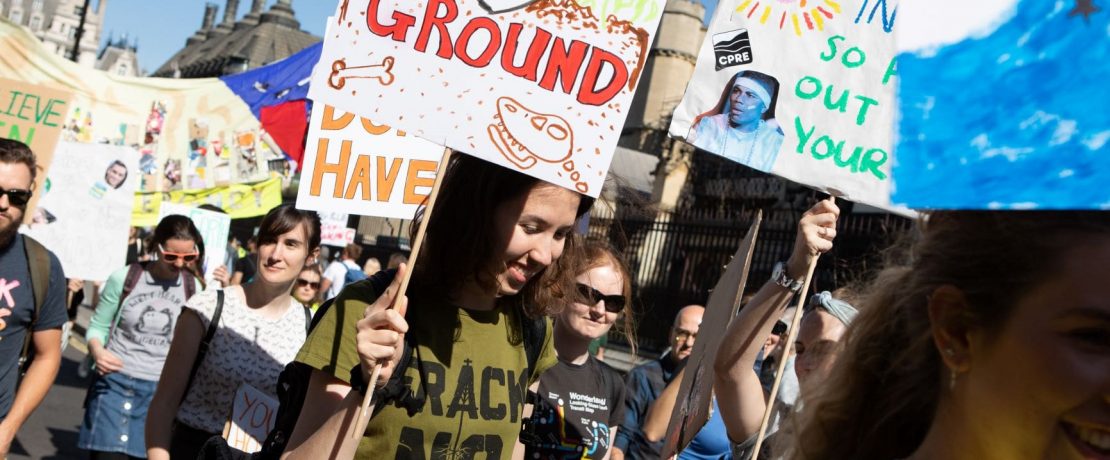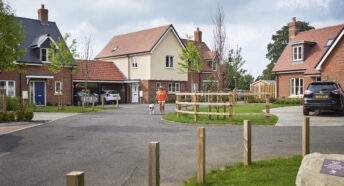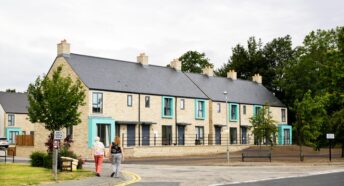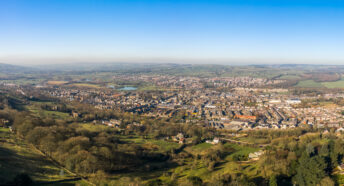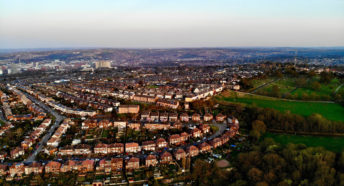What is fracking?
You’ll likely have heard about fracking, or at least come across the name. But what exactly is the fracking process – and why is CPRE campaigning against it?
What is fracking?
Fracking, or hydraulic fracturing, refers to a method used to extract gas or oil from shale rock. Shale rock is basically earth that’s been squashed over time.
The gas and oil trapped within shale rock are harder to release than the conventional natural gas deposits like those under the North Sea. To access shale gas or oil, the rock is fractured at high pressure.
Fracking involves drilling down to over 2km, then across for as much as 3km. The gap between the lining of the borehole that has been drilled and the surrounding rock is sealed up with concrete. The well casing is perforated to allow fracking fluid to get into the rock, and gas to get out. Then, on a typical well, up to ten million litres of water gets pumped into the borehole under extremely high pressures. This water contains sand, lubricating fluids and other additives.
This opens up cracks in the shale for up to 50 metres. When the pressure is released, the sand particles keep these cracks open and shale gas escapes. The installed well head then captures the released gas.
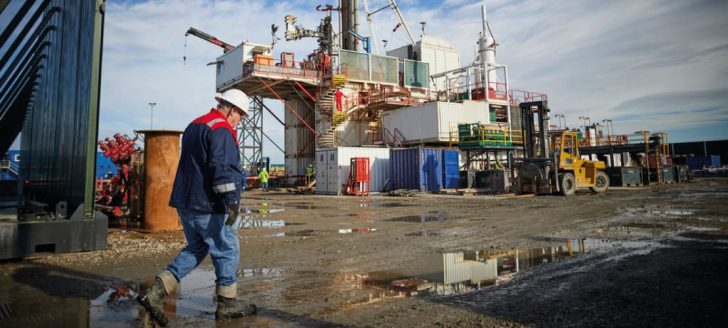
The scale and impact of fracking
This method of extracting oil and natural gas from shale rock underground is controversial for lots of reasons. Its large-scale adoption would industrialise our countryside, and worsen the climate crisis.
Analysis by the Cardiff Business School found that we’d need thousands of fracking wells to have any measurable impact on our energy needs. This would create unforeseen consequences for our countryside and rural communities.
The large number of traffic movement involved, particularly during the exploration phase, has already led to major disturbances for nearby residents. In addition, the use of small country roads for convoys of HGVs has caused blockages and damage to local transport infrastructure. One analysis by the fracking company Third Energy in 2015 anticipated that one of their sites in North Yorkshire would involve over 14,000 vehicle movements.
On top of all this, fracking licences spread into many of England’s protected landscapes and wetlands.
Fracking and the climate crisis
Fracking will have a severe effect on the climate crisis, the biggest threat to our countryside. Although it might reduce our reliance on Liquefied Natural Gas (LNG) imports, producing more gas in the UK adds to its global supply and consumption. This would increase emissions and nullifies any difference in footprint.
Last year the Committee on Climate Change (CCC) recommended that the moratorium on fracking should not be lifted without a thorough review on the impact of shale gas extraction on the UK’s climate budgets. Despite this, the moratorium has been lifted without any such review.
Fracking also releases methane, a greenhouse gas that’s up to 34 times more potent than carbon dioxide. Multiple studies have found a link between fracking and methane leakage. During just one week in 2019 at the Preston New Road fracking site in Lancashire, researchers found that the methane emissions leaked were the equivalent environmental impact of 142 transatlantic flights.
The UK has a legal obligation to reach net-zero by 2050 – resuming fracking risks our ability to meet this. Fracking has no place in a zero-carbon future.
Fracking and local democracy
A recent YouGov opinion poll found that only 28% of people support fracking. Another recent Survation survey suggests just 34% of people support fracking, compared with 74% support for onshore wind and 81% for solar energy. In general, polling continues to show a huge level of support across the political spectrum for renewable energy projects. Opposition to fracking is even higher in communities where fracking would occur. An opinion poll in 2017 revealed that two-thirds off residents in Lancashire opposed fracking in their area.
This is maybe why the government is looking into fast-tracking fracking applications through the planning process by designating fracking in the Nationally Significant Infrastructure Projects (NSIP) regime. This would bypass local democracy. The last time this happened, CPRE and local residents resisted – and the same will happen again.
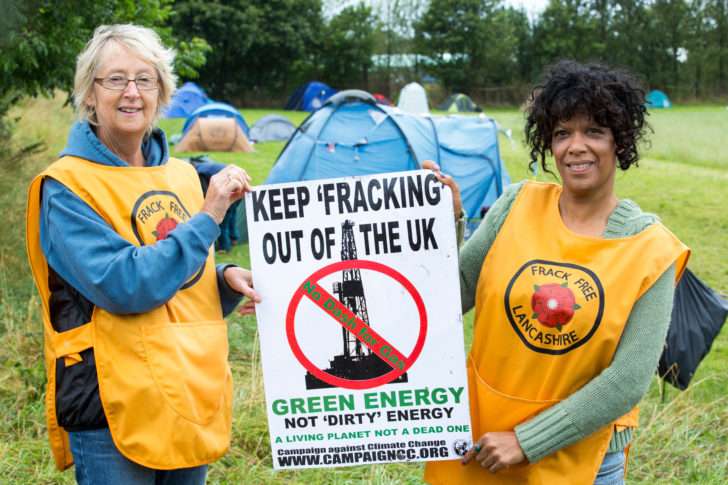
If communities get a meaningful say on whether fracking takes place, it’s highly unlikely – given the previous track record – that it will go ahead.
Fracking and earthquakes
In 2011, two earthquakes near Blackpool led to a temporary ban on fracking for 18 months. The strongest earthquake registered 2.3 on the Richter scale. When the government lifted this ban in late 2012, it introduced a ‘traffic-light system’ to regulate fracking and seismic activity. Current rules require drilling to stop in the event of a tremor above 0.5 on the Richter scale.
In 2019, fracking company Cuadrilla triggered a series of earth tremors at its Preston New Road site in Lancashire. This included a 2.9 magnitude earthquake that alarmed residents living five miles away who felt their houses shake. In addition, 197 people from 8 surrounding postcode areas complained about the damage it caused. Cuadrilla had to repeatedly halt fracking operations due to these earthquakes.
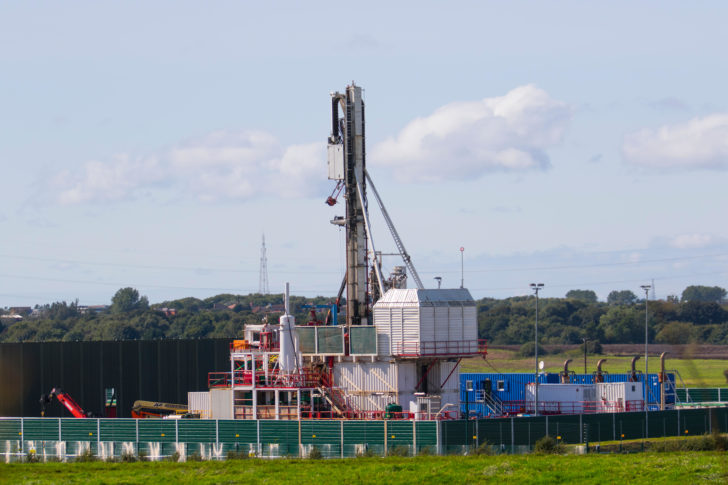
It was partly the risk of earthquakes (and the outrage caused among local residents) that led to the moratorium on fracking in November 2019.
Furthermore, Professor Peter Styles, one of the UK’s leading geologists, has advised against fracking in areas where there has been coal-mining because these areas are particularly at the risk of earthquakes.
The scientific review by the British Geographical Survey has found that reducing and predicting the risk of earthquakes caused by fracking ‘remains a scientific challenge’.
What are the alternatives to fracking?
In 2020 we published a report, ‘Greener, Better, Faster: Countryside solutions to the Climate Emergency’. This report sets out how the countryside can provide many of the solutions to the climate emergency, if we invested in them. This includes:
- Immediately disincentivise all exploration and development for coal, oil and gas.
- Apply a strict energy hierarchy to future supply, prioritising demand reduction and energy efficiency and then renewables.
- Invest in a new generation of renewables, done in a way that:
- benefits the rural economy;
- has the support of local communities;
- benefits wildlife;
- minimises impacts on landscape, tranquility and cultural heritage.
- Empower local communities to shape their energy future, both financially and through the introduction of participative approaches to planning for rural energy schemes.
